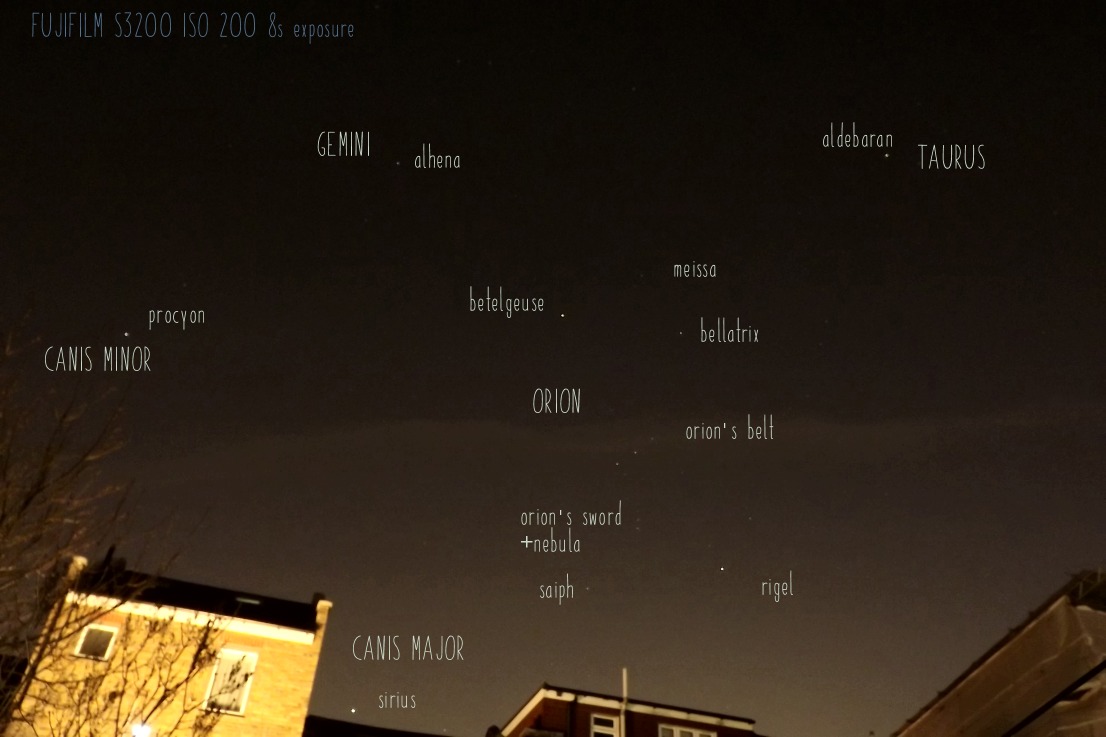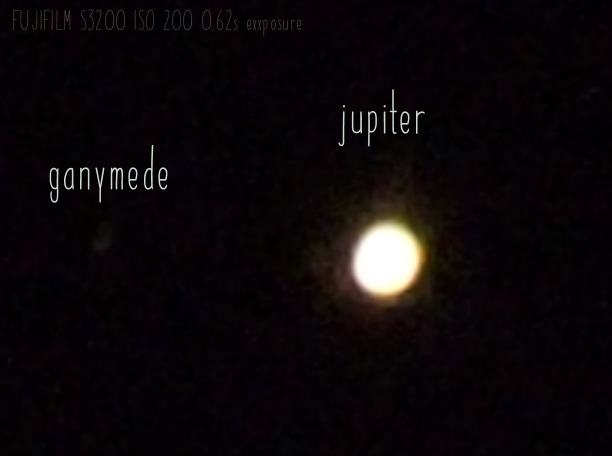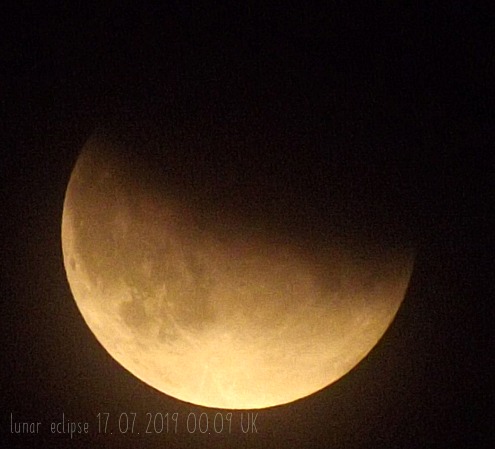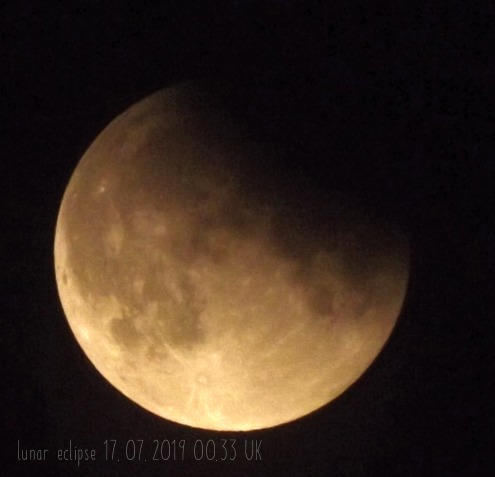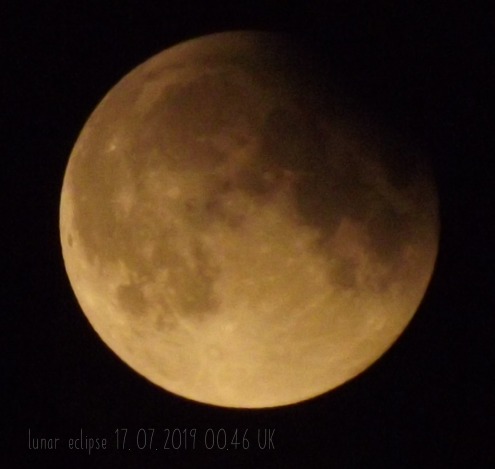So after half a lifetime of talking about it, I actually got round to buying a proper telescope! In truth, it was the Chipmunk's astronerdiosity (I wonder where he got that from?) that persuaded me to finally go for it. For this reason I decided on a relatively small refractor, rather than the 200mm reflector I'd always planned on buying. I decided on an altazimuth mount, as 1. equatorial mounts are scary, and 2. my area is so built up, I'd be having to move the telescope around the garden (and house) in order to actually get/keep things in my field of view. Also, EQ mounts are scary.
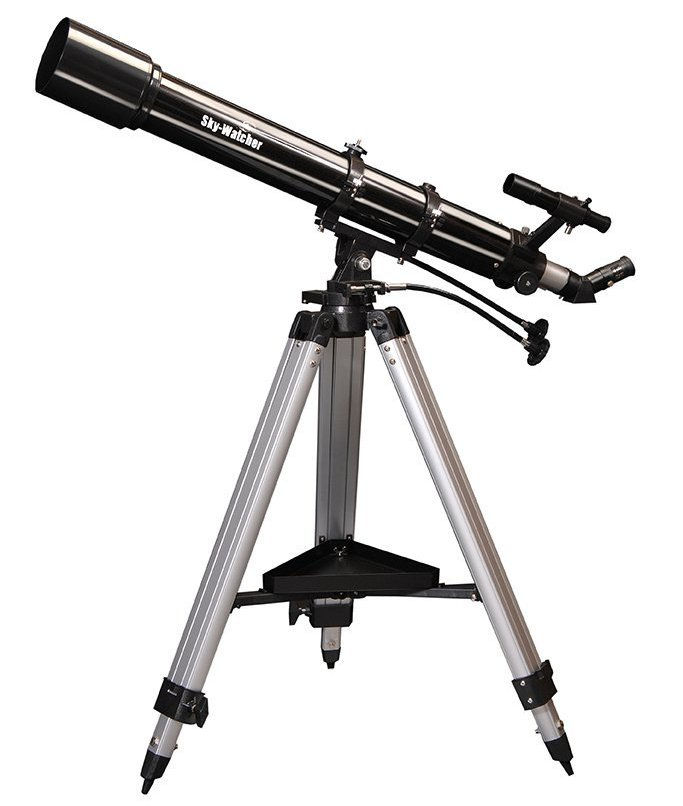
I named her Eva.
I got mine from Harrison Telescopes (not sponsored), they appeared to have the best customer service, and competitive prices. I also purchased a moon filter, which was just a flimsy bit of plastic, but it does its job. Two eyepieces were included, a 25mm (36x) and a 10mm (91x).
Price 5/5
I paid £140 in March 2019, with all accessories included (no carry case though). The price seems to have gone up since then, though. At that price, I felt I wouldn't have too much of a mental breakdown if the kids knocked it over in the dark and smashed it. Although let's face it, I'm just as likely to be the one to do that (I've had 3 close calls already!).
The moon filter was £8.99
Portability 5/5
What I really love about this scope is how lightweight and easy to carry around it is! I can carry the tube in one hand up two flights of narrow stairs. The tripod is also lightweight, although if you keep the slow motion controls on, keep them to the front while you carry the tripod (I learnt the hard way how easy it is to knock things over if you keep the controls at the back!). The tripod is sturdy, despite its lightness.
Optics 4/5
The telescope comes with an erecting prism, so that your images are always corrected to match the real world view. However, the finder still gives a reversed upside down image. It's not too much of a problem. Just be aware that a regular star diagonal is not included.
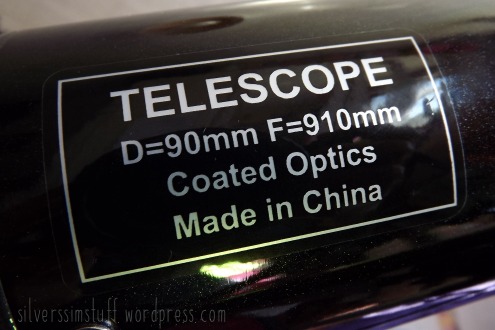
The images are clear and crisp. I can clearly see the yellow hues of Saturn, as well as Saturn's rings; the image was absolutely tiny with the 10mm eyepiece, but the rings can be clearly distinguished from the disc of the planet. And this was through the double glazing of my bedroom window (as I said, built up area, I have to go up to the second floor to be able to see anywhere near the horizon). If seen without the extra layers of glass impeding the light, I'd probably get an even clearer image. I've seen Jupiter's moons as well. I could get a clear disc and just about make out the bands of colour on Jupiter the first time I saw it, but on later viewings, all I could see was a fuzzy disc. Not sure what's going on there, as I can still get Saturn into focus clearly. Mars was a massive disappointment. I saw it through the scope in March 2019, and it was just a red star, no disc in view, let alone details. However, I believe Mars was near its furthest point from us at the time. I think it's due to come closer in October this year, so I'll try again then.
The Orion Nebula was lovely. I believe my reaction to it was "ooooooooooooooooooh!". It was grey though, don't expect to see any colour on a telescope this small. It was still an amazing sight. I also saw the Pleiades (plus what I think was a satellite going "through" them, it looked like a teeny tiny little white star travelling across them in a straight line). Again, the colour was mostly washed out, but I think there was a hint of blue at least. Chipmunk's reaction to seeing the Pleiades was "ooooooooooooooooooh!"! In any case, the Pleiades are nicest viewed through binoculars, I think. I got good views of Orion's belt, Meissa, plus I could easy split, and distinguish teh colours of, Mizar and Alcor in Ursa Major. I think I may have been able to split Castor, I can't quite remember. As much as I tried, I just could not locate the Beehive Cluster in Cancer, even though I spent ages looking. Perhaps my skies aren't dark enough, and my eyesight too blurry.
The detail I can see on the moon is amazing! The craters, the shadows, it's just beautiful! We saw Moon Baby's house too! For kids especially, the moon is the easiest and most interesting thing to see. The moon filter really does reduce the harsh brightness of the moonlight through the scope.
I also bought a 5x Barlow lens from Scamazon, but that was a mistake, as it doesn't work too well with the 10mm eyepiece, and using it with the 25mm gives a view not much different from using a 10mm by itself. It was only any use on the moon. Using it for planetary views was a waste of time, as I just couldn't get it to focus on Jupiter or Saturn. I only got it because it was cheap, but even for that price, I don't recommend it if you have a 10mm or smaller eyepiece.
User-Friendliness 4/5
The telescope was a bit fiddly to set up, but then I've never set up a scope before. The Chipmunk actually seemed to get the instructions more than I did, so I guess it's easy if you have a five year old with you. The ridged part that comes out when you adjust the focusing knob (no idea what it's called) is covered by a very sticky glue type substance. No idea why it's there and if it's meant to stay, but it was gross. It stuck to my hands each time I touched it, and then stuck to anything I touched. It was really hard to get off as well, as any cloth you use to clean it will also get stuck to it. I don't know if it's meant to be some kind of lubrication, but whatever it is, it was a bad idea to put it there, as you will inevitably touch it when fumbling around with the controls in the dark, and it gets over everything.
Mounting and unmounting the scope is simple.
The slow motion controls are useful, but be aware that the scope has to be aligned somewhat in the middle of the mount for them to work. I was so confused about that at first, wondering why I was turning the control, but the scope wasn't moving, although it seems so obvious now.
You can lock the axes in place, and movement on the mount is fairly smooth. However, I find that even with locking, the slightest touch to the scope can knock your image out of view, as the kids have found out so many times when I try to show them the planets. It's so hard to get kids not to hold the eyepiece when looking. As long as you don't touch the scope though, the tripod is stable, and gives a steady view.
The dew guard can be removed so you can clean the objective lens. Eyepieces are the standard size and are easy to insert and remove.
There is a screw on top of the mount, I'm guessing it's so you can attach a camera to it, but the problem is that the camera will be aligned to neither the finder, nor the scope (I know, because I tried). That means you'd have to then realign the finder to the camera view, and that's just not worth it. Plus the camera was not at all stable on the scope's mount. I find it easier to just use my camera's optical zoom, and mount it on its own tripod.
Be aware that there is a big warning on this scope saying it can't be used to view the Sun using the projection method. Many astronomy books recommend this as a safe way to view the Sun, however the manual says to definitely not do this as it will overheat and damage the scope.
VERDICT
It's a great scope for beginners and children. It's definitely a worthwhile investment, better than the cheap flimsy ones you get from Argos and wherever, which will probably put you off astronomy with their poor quality. If you have kids interested in astronomy, really consider the EvoStar 90mm. It's a sturdy yet portable scope, with good optics that will last. The inclusion of the erecting prism means you can double it up for wildlife and birdwatching too (always supervise kids when using optics during the day, to avoid accidentally looking at the Sun).
4.5/5
If you think your kids may outgrow their interest in astronomy as quickly as they acquired it, I would forget about telescopes completely. Either invest in a really good quality set of binoculars, or do what I did initially, get a cheap £10 monocular, which again, can be used for wildlife watching if your kids tire of skywatching.
Here are some photos, NOT using the telescope. I used my bridge camera, which doesn't have removable lenses.
